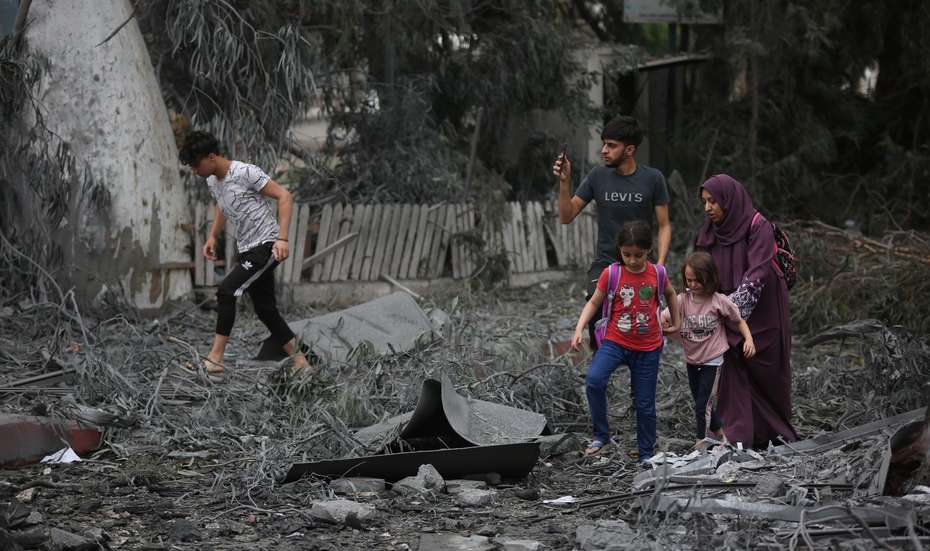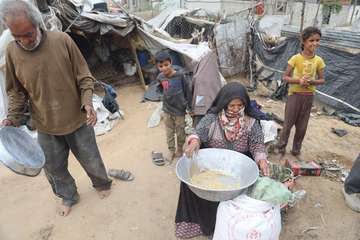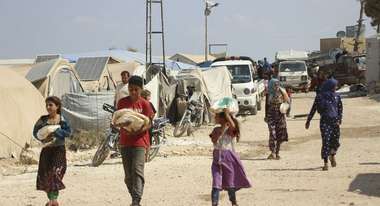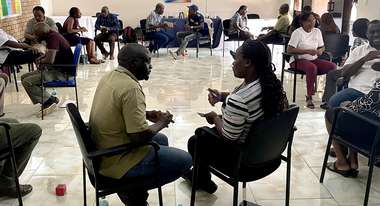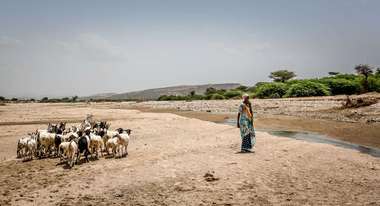Threat of Famine in Gaza: The Right to Food Severely Limited
Pressure should be exerted on the conflicting parties so that they fulfil their obligations under humanitarian law to secure a minimum level of food, shelter, health care and education. The UN Security Council could set up an international enquiry.
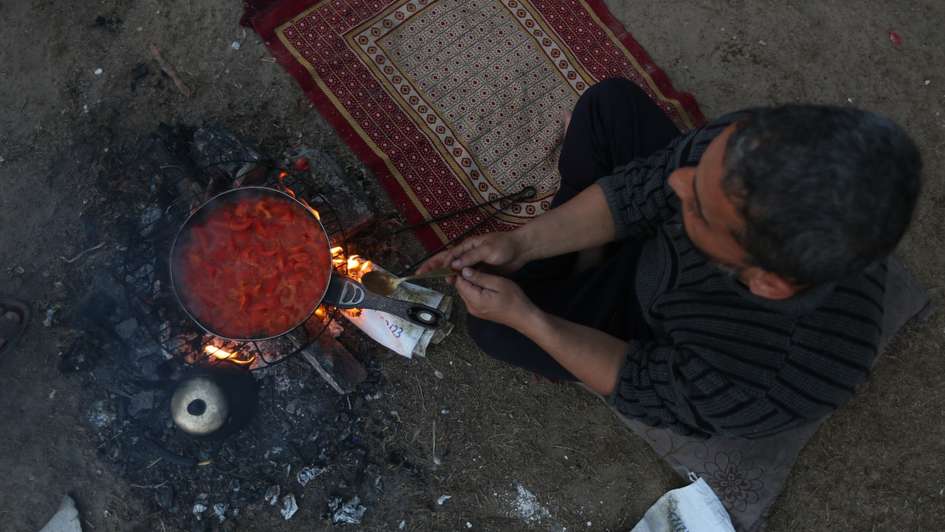
The escalation of the conflict in the Gaza Strip since October 2023 has led to a severe humanitarian crisis marked by widespread food insecurity. Successive Integrated Phase Classification (IPC) reports have documented the extremely high and increasing levels of acute food insecurity in the Gaza Strip. The latest report from 18 March 2024, indicates a staggering 50% of the population at risk of famine, with conditions deteriorating rapidly.
The blockade imposed on the Gaza Strip, along with the sustained bombardment and ground operations of recent months and the restrictions on the delivery of emergency relief, have resulted in dwindling food stocks and widespread scarcity. The agrifood system has been decimated, with extensive damage to farmland and infrastructure such as food processing facilities, greenhouses, wells, farms, bakeries and warehouses, as well as the displacement of population away from agricultural land and constrained access for agricultural activities. Fishing production has largely halted.
Physical and economic access to food, an essential precondition for realizing the Right to Food, has been severely impaired by the hostilities, the massive displacement of people, the restrictions on imports and limited supply of humanitarian food assistance, and the destruction of civilian infrastructure including markets and bakeries. Formal markets have collapsed, and prices of essential foods (flour, iodized salt, basic staples, potatoes) have sharply risen. Access constraints impede the movement of humanitarian and commercial traffic, such that daily food availability has been reduced by half (by weight) compared to pre-October 2023 levels.
As market functionality declines, humanitarian aid is limited and whatever stocks are available become unaffordable, virtually all households are skipping meals every day. Nearly all households are resorting to extreme coping strategies on a daily basis to deal with the lack of food or money to buy food. The quality of diets has deteriorated rapidly, with heavy reliance on cereals and tubers and negligible intake of either protein-rich foods or fruits or vegetables. Compelled consumption of wild or unsafe food highlights the desperation faced by many households. Prolonged and extreme food consumption gaps increase nutritional risks, especially among vulnerable groups such as children, pregnant and breastfeeding women, and elderly persons, with increased incidence of diarrhoea, acute respiratory infections and other infectious diseases.
The flow of humanitarian assistance has been severely disrupted and unevenly distributed across regions and across vulnerable populations within regions. With the violence, insecurity and destruction, women, children, elderly and disabled face serious protection risks in accessing food.
Short-term food security requires the proper utilization of food. This depends on the availability of clean and safe drinking water, adequate food preparation, sanitation and healthcare. Access to clean water for washing and cooking is highly limited; most water is unfit for human consumption. Cooking fuel of any type is beyond the reach of most people. Most health facilities are not functioning, while the breakdown of sanitation services combines with other risk factors into a high risk of excess mortality from endemic diseases.
The damage to Gaza's food system will have long-lasting effects, negatively impacting food supply sustainability for years. This is due to the destruction of farmland and essential infrastructure, as well as widespread contamination of agricultural lands by unexploded ordnances.
The Right to Food in Conflicts
The Universal Declaration of Human Rights (1948) recognized food as a core aspect of an adequate standard of living. The International Covenant on Economic, Social and Cultural Rights (ICESCR) further solidified this right in 1966.
States are obligated to progressively realize the Right to Food, ensuring non-discrimination, non-retrogression, and taking steps toward its fulfillment using all available resources. These obligations include providing minimum essential levels of food, shelter, healthcare, and education.
In armed conflict and occupation, human rights law applies, including the Right to Food. The ICESCR does not contain explicit derogation clauses, meaning the Right to Food remains applicable even during emergencies. In armed conflicts, international humanitarian law supplements human rights law.
The provisions of international humanitarian law relevant to the present situation in Gaza emphasize the responsibility of the occupying power to ensure the food security of the population. Article 55 of the Fourth Geneva Convention mandates the occupying power to secure necessary food supplies if resources within the occupied territory are insufficient. Article 59 obliges the occupying power to facilitate relief schemes for the population, including the provision of food, medical supplies, and clothing. Furthermore, Article 23 highlights the need for special consideration for vulnerable groups, such as children under fifteen, expectant mothers, and maternity cases, ensuring their access to essential foodstuffs.
The Additional Protocols to the Geneva Conventions explicitly prohibit the starvation of civilians as a method of combat and the destruction of objects indispensable to civilian survival, such as food supplies and agricultural areas. In May 2018, the UN Security Council passed Resolution 2417, which condemns the starvation of civilians as a method of warfare and calls for safe and unimpeded access for humanitarian aid to populations in need.
What Must be Done to Protect the Right to Food in Gaza?
Urgent action is paramount. Gaza is enduring immense suffering, with widespread risk of starvation. First and foremost, the immediate implementation of a ceasefire is necessary to ensure unimpeded humanitarian access to address the urgent needs of the people in the Gaza Strip.
- All parties in the conflict should be urged to comply fully with their obligations under international law to ensure the protection of the right to adequate food for all affected individuals in the Gaza Strip. Pressure should be applied on the parties in conflict to uphold their obligations under international humanitarian law, including refraining from using starvation as a tactic of war.
- The parties in the conflict should refrain from assaulting or attacking food, agriculture, agrifood systems infrastructure, and facilities such as warehouses, bakeries, water infrastructure, food processing facilities, food retailers or agricultural land.
- Safe and unimpeded access to the Gaza Strip must be facilitated, including the opening of all access points, allowing food and other aid to reach affected populations, particularly those in situations of vulnerability. The safe movement of humanitarian personnel must be guaranteed, along with establishing reliable telecommunication networks to coordinate response efforts effectively.
- The international community should reinforce its efforts to ensure immediate access to food by the population in Gaza, by allocating sufficient financial resources, including resuming/increasing their financial commitments to UNRWA (United Nations Relief and Work Agency for Palestinian Refugees), to ensure that humanitarian aid agencies can provide the required food aid to the population in need.
- The immediate delivery of acute malnutrition treatment services across Gaza is urgent, including ready-to-use formula for non-breastfed infants, ensuring access to safe drinking water, and offering complementary foods and micronutrient supplements to young children, pregnant and lactating women, the chronically ill, and the elderly.
- Preventing famine requires the immediate reactivation of private sector imports, domestic trade and production, and local production requires immediate entrance of food production inputs. The commercial trade of food and food production inputs, and the domestic production of fresh, perishable nutritious food in the Gaza Strip, must be resumed as soon as possible.
- Fulfilling the Right to Food requires continuous monitoring of the access to essential food, water, and medicine, the functionality and accessibility of services, the entry of commodities into Gaza via commercial trucks or aid deliveries, population displacements and conditions in shelters, disease outbreaks and morbidity rates, and levels of acute malnutrition and mortality, distinguishing between trauma and non-trauma causes.
- Immediate investment is crucial to ensure the protection of remaining livestock and farms and the rapid recovery of the damaged agriculture and food system infrastructure caused by the conflict. The international community should prioritize swift restoration efforts aimed at minimizing post-conflict scenarios of food insecurity, including implementing programs to restart the agrifood system and enable all individuals in Gaza to exercise their right to adequate food.
- Finally, the United Nations Security Council may consider putting in motion an international investigation to assess the extent to which the Right to Food has been violated by all parties to the conflict, as well as those providing support to such parties. This could include the establishment of a dedicated United Nations Commission of Inquiry or continuing support to an existing one.
The humanitarian crisis in Gaza underscores the urgent need for states to fulfill their obligations under international law to ensure access to food for all, even in conflict zones. Cooperation and adherence to legal frameworks are essential to address the immediate needs of vulnerable populations and prevent further deterioration of the situation.
As stressed in the March, 2024 IPC report, “the projected Famine can be prevented or alleviated. All evidence points towards a major acceleration of deaths and malnutrition. Waiting for a retrospective Famine classification before acting is indefensible.”
© FAO, 2024
Benjamin Davis
The views expressed in this publication are those of the author(s) and do not necessarily reflect the views or policies of the Food and Agriculture Organization of the United Nations.
All views expressed in the Welternährung are those of the authors and do not necessarily reflect the view or policies of the editorial board or of Welthungerhilfe.

